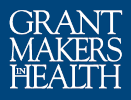

Christi Baker, Program Officer, Abby Hughes Holsclaw, Senior Director,
Joseph A. Antolín, Executive Director,
Asset Funders Network
Investing in integrated health-wealth strategies that benefit families and children provide the greatest opportunity to set the conditions for children, regardless of race, gender, and zip code, to thrive now and as future adults.
Today, as we navigate the pandemic, deep racial and economic inequities in health and wealth outcomes have been revealed and amplified for children—especially children of color. Health and wealth are inextricably linked. The conditions in which people are born, grow, work, and age determine their health, and the conditions across communities for income stability and generational wealth transfer are not equitable. If a family has insufficient or unstable income, low savings, or unmanageable debt, it impacts their stress levels and health status. If they live in unsafe or crowded housing or do not have access to a safe way to get to school or place to play, their health suffers. Investments to improve health outcomes using the social determinants of health and to promote financial well-being across families are mutually supportive. The ultimate goal is to ensure that all children are healthy, financially secure, and live in families without daily financial stressors because of assets and wealth.
In the Asset Funder Network’s (AFN’s) 2017 brief on the health-wealth connection, we identified that building wealth and improving health occurs at the five major stages of our life cycle—in utero-toddler (0-3 years), childhood-adolescence (3-17 years), young adulthood (18-30 years), middle adulthood (30-50 years), and older adulthood (50-70+ years). Over the last two years, we developed two new briefs that focus on children ages 3-17 and young children 0-3, and the vital need for integrated health-wealth strategies and investments for children.
Children are our future decisionmakers, drivers of our economy, and parents of generations to follow. Their financial, physical, and mental health, in turn, will directly affect the health-wealth outcomes of their children:
- The ages of 3-17 are a crucial developmental period for children. Future health, behavioral patterns, and opportunities will be shaped as the foundation for their well-being and wealth as future adults.
- Children in the earliest months and years of life (0-3) are impacted by the bidirectional health-wealth connection more intensely than any other age group.
- Children are impacted by the bidirectional health-wealth connection in many ways. When children and their families have low wealth compared to others, they experience negative health outcomes. Many existing health-wealth strategies focused on children occur through two-generation approaches at trusted sites where children are and tailored supports for parents.
What can funders do to promote these strategies across the child life-course?
Funders are positioned to play a pivotal role in integrated health-wealth strategies that advance equity by using their investments, voices, and influence. A selection of interconnected recommendations to promote equitable strategies across the child life-course include:
- Invest intentionally in integrated strategies for children and their families, especially those aimed at children and families of color. Using an equity lens, funders have an opportunity to invest in a continuum of interventions, including on-the-ground programs and advocacy for public and private policy and systems change at the local, state, and federal levels.
- When investing in programs, funders can build on and replicate proven strategies that meet children and their families where they are, are multifaceted, and offer multigenerational support to impact health and wealth, such as improving housing access, increasing income, proving nutritional supports, seeding generous children’s savings accounts with coaching or other parental engagements, and addressing other social determinants of health.
- When investing in policy change, funders can support organizations and movements that are advocating to create the healthy conditions in which all children can grow and thrive, including paid family leave, higher minimum wage, greater income predictability, wealth-building programs that redress racial inequality, improved consumer protections related to debt, universal health care access, universal preschool, increased affordable housing, greater child care access and affordability, and increased community and economic development.
- Increase community will by building awareness and connections to improve both health and wealth outcomes for children. Creating the conditions for all children to thrive requires integrating and aligning work among public, private, faith, and nonprofit sectors, and effective partnerships between organizations. Funders can help increase awareness about the connection between health and wealth and interact with organizations at various levels to ensure that opportunities to improve health and wealth are broadly available and easily accessible. Increased collaboration between health and asset funders has the potential to help families, especially families of color, build their wealth and improve their health in community and region.
- Innovate and expand on promising practices. Funders can fund pilot initiatives to explore what is possible, identify the gaps in their community, and then take successful initiatives to scale. Pilots should use an equity lens and include evaluations that track health and wealth outcomes reflecting race and ethnicity data and the different interventions to achieve equitable outcomes. Sharing the information and lessons learned from pilots with other funders and stakeholders can inform and influence expansion and policy change efforts. Promising pilots that further equity in health-wealth outcomes for children and their families include sustainable homeownership programs, student loan forgiveness initiatives, guaranteed income, fines and fees relief and reform programs, capital provision for minority-owned small businesses, and creation of racially equitable wealth.
What are the current or projected impacts of COVID-19 on the evolution of health-wealth solutions for children?
Due to enduring systemic inequities in health and wealth, COVID-19’s impact on communities of color is excessively high, which is reflected in the disproportionate infection and death rates in communities of color. This inequitable impact reveals and exacerbates preexisting disparities across racial and economic lines. Structural racism has limited access to good jobs, quality education, healthy housing and neighborhoods, food security, health care services, and other social determinants of health. The resulting financial insecurity, chronic stress, and underlying health issues combine to make adults and children in communities of color far more vulnerable to the current pandemic.
To ensure that everyone’s circumstances allow them to be healthy and financially secure, our systems need to be reimagined to be equitable. Investing in research, advocacy, organizing, and civic engagement allows us to test new ideas and deliver the systemic health-wealth changes we know are right. The dramatic policy responses to COVID-19 show us that rapid change, even if short term, is possible. To foster equitable health and wealth results at scale, structural change built on principles of equity is needed.
What are the racial justice implications of this work?
Wealth inequality in the United States. is far more pronounced than income inequality. =The top 1 percent own 35 percent of the total wealth (Purnell and Hajat, 2017). That reality reduces opportunity, stagnates growth, and ensures poor health-wealth outcomes. Historical and ongoing structural racism, including discriminatory practices in education, employment, credit markets, and criminal justice, mean that racial wealth inequality in the United States is even more extreme. In 2016, the typical White household held about ten times the wealth of the typical Black household, and over seven times the wealth of the typical Latinx family (Kent et al. 2019). Research reveals that for many children, health and wealth inequities are standing in the way of a prosperous future, especially for those of color. Children born into financial insecurity face likely negative consequences now and later in life. We have an urgent need to ensure that all children are born into economic circumstances that allow them to be safe now and fulfill their potential.
Are there opportunities for health funders to collaborate with asset funders?
AFN brings together grantmakers from across the United States who are passionate about promoting economic opportunity and financial security for all Americans. Through our national work and place-based work in nine regions (Arkansas, Bay Area, Greater New York, Indiana, Louisiana, New Mexico, North Texas, Puget Sound, and San Antonio) and projects across the Southern states, we provide opportunities for health and asset funders to learn, connect with one another, and share best practices for investing in health-wealth strategies. For more information, visit https://assetfunders.org/.
References
Kent, Ana, Lowell Ricketts R., and Ray Boshara. What Wealth Inequality in America Looks Like: Key Facts & Figures. Federal Reserve Bank of St. Louis, August 14, 2019.
Purnell, Jason Q. and Anjum Hajat, The Health and Wealth Connection: Opportunities for Investment Across the Life Course. Asset Funders Network, 2017.
